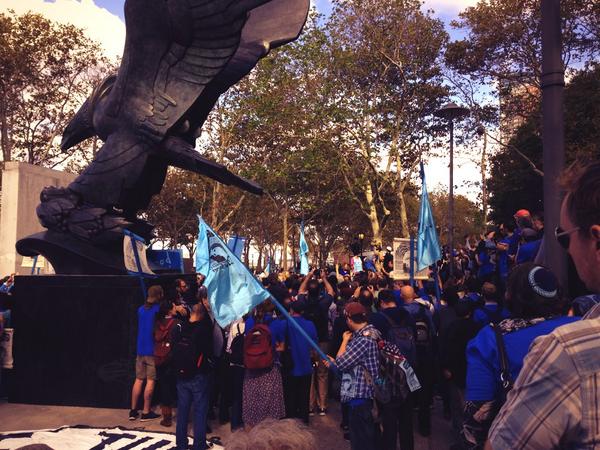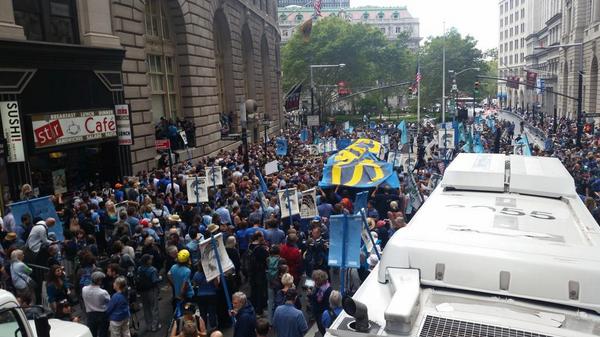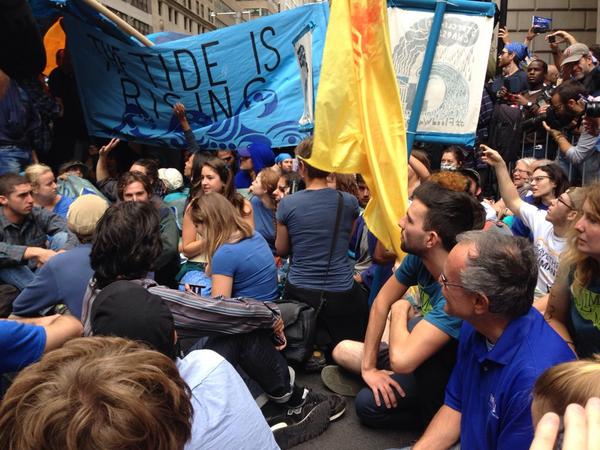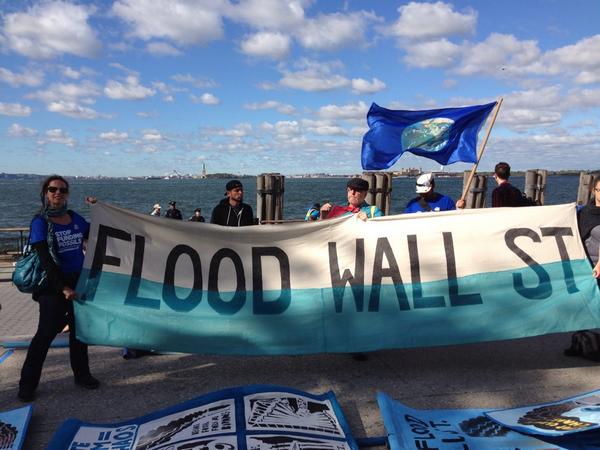Flood
Wall Street takes over NYC's business district
22
September, 2014
United
under the “Flood Wall Street” banner, some 2,000 demonstrators
streamed into New York’s financial district Monday afternoon and
promptly sat down in the streets.
The sit-in, which organizers say is aimed at confronting “corporate polluters and those profiting from the fossil fuel industry,”completely shut down traffic in the area.
Just one day after more than 300,000 people took part in the world’s largest climate-related protest, thousands of more rebellious activists risked arrest to shut down part of New York City’s financial district to demand action against global warming.
The sit-in, which organizers say is aimed at confronting “corporate polluters and those profiting from the fossil fuel industry,”completely shut down traffic in the area.
Just one day after more than 300,000 people took part in the world’s largest climate-related protest, thousands of more rebellious activists risked arrest to shut down part of New York City’s financial district to demand action against global warming.
Activists,
many of whom took part in the Occupy Wall Street protests three years
ago, did not have a permit for the demonstration from the New York
Police Department, meaning they risked arrest for participating.
National Lawyers Guild members sprinkled through the crowd handed out
legal advice to those at the scene, and several people have already
been arrested.
Much
of the route mapped out by organizers had been gated off by police,
but around 12 p.m. EST the march moved from Battery Park, weaving
through traffic before setting up camp near the Wall Street bull on
Broadway.
Speaking
with RT, New Yorker Zach Weinsteine said Flood Wall Street wants to
“demand action on the climate process now.”
“The
time for action was actually 25 years ago,” he added. “The longer
we wait, the more difficult the solutions will be necessary to solve
the problem.”
Among
dozens of signs, waving flags, and elaborate costumes, protesters
also brought along two giant, inflatable balloons representing carbon
emissions. At two different points in the protest, the balloons
crossed over the gates protecting the Charging Bull statue and were
popped by police officers.
At
another point, some protesters took over the top of a double-decker
tour bus, waving protest flags and cheering as it drove past the
sit-in.
While
the protest has generally been peaceful, Reita Ennis from Boston,
Massachusetts, said that both the People’s Climate March and the
more confrontational approach espoused by Occupy/Flood Wall Street
were necessary considering the Earth’s current state.
“I
think civil disobedience is going to be an important part of this
fight,” she said, going on to criticize a“do-nothing Congress”
as well as capitalism in general for failing to curb the dangers of
global warming. “Today is taking another step to show we’re
serious.”
Sam
Coodley, an independent filmmaker and anti-fracking activist, told RT
Flood Wall Street was necessary to show people taking more direct
action.
“[The
People’s Climate March] was an incredible event, but there was a
lack of closure,” said independent filmmaker and anti-fracking
activist Sam Coodley to RT. Flood Wall Street is about directly
confronting climate change “rather than marching and going home.”
“Occupy
started on a Monday like this and spread to every continent,” added
Coodley, who traveled from Colorado for this week’s climate events.
He acknowledged that recreating that impact may seem like a lofty
goal, but “hopefully this spreads elsewhere” in the US and around
the world.













No comments:
Post a Comment
Note: only a member of this blog may post a comment.